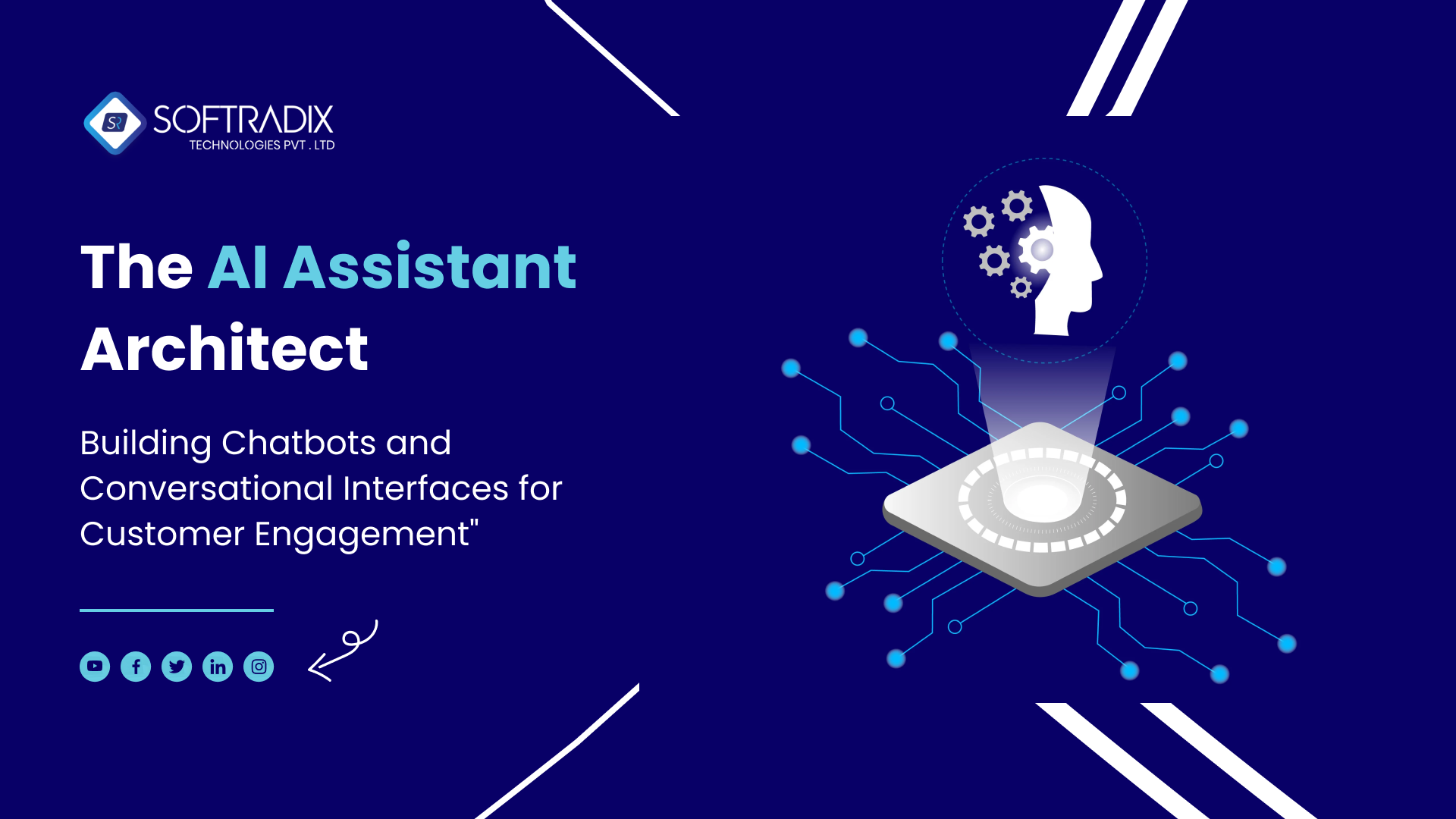
Nowadays, companies are always eager to find new and effective tools and strategies to improve their communication with customers and the effectiveness of their work. Technological advancements have continued to revolutionize these sectors, particularly through AI-enabled chatbots and conversational interfaces. Such tools have become very useful in communication between the organization and the customers as they offer immediate assistance, organize customer relations, and address customers’ complaints effectively. In this blog, we will take a look at the process of creating chatbots and conversational interfaces, from their usefulness in reaching out to customers to some tips on making your AI assistant better.
The Rise of Conversational AI
Conversational AI represents the fundamental system for implementing new approaches to processing and interpreting human speech using machines. This entails applications such as chatbots, voice assistants, and other interactive agents that incorporate (Natural Language Processing) NLP and (Machine Learning) ML in their operations.
The adoption of conversational AI has been driven by several factors:
1. Customer Expectations: Modern customers expect quick and efficient responses to their inquiries. Thus, conversational AI meets demand by offering constant support at any time of the day or night.
2. Advancements in AI and NLP: These advancements have improved the tools and techniques used in AI and natural language processing, leading to the development of effective conversational interfaces.
3. Scalability:AI assistants are designed to manage many people at the same time, thus the usage of these assistants can be quickly enlarged in companies that have large numbers of customer interactions.
4. Cost Efficiency: Implementing artificial intelligence chatbots in customer support minimizes the number of employees in the customer service sector hence cutting costs.
Building the Foundation: Key Components of Conversational AI
Creating a successful chatbot or conversational interface involves several critical components:
1. Natural Language Processing (NLP): Conversational AI systems cannot exist without NLP as its core foundation. It helps to translate the human language in a way that the system can comprehend easily. Some important NLP techniques are to understand the intent of a text, the resulting entities, and sentiment in a text.
2. Dialog Management: This component is responsible for the interaction management of the conversation with the imposed focus on moving the conversation naturally from one topic to another. It controls the flow of the conversation, keeps a record of the intents of the users, and identifies the responses.
3. Integration with Backend Systems: For a chatbot to be valuable to users, it needs to connect with backend applications, including customer databases, knowledge bases, and CRM systems. This integration enables the bot to fetch and refresh data at any one time.
4. User Interface (UI): A specific web design of the chatbot has to be managed on purpose for the sake of providing the user with a pleasant experience. This entails typing, talking to a screen, or even having icons and buttons and appreciable pulsating quick replies.
5. Training and Optimization: The creation process of a chatbot is usually a never-ending process that needs constant updating and refinement. This entails capturing interaction with the users, evaluating the performance, and improving on the responses provided by the bot which are dependent on the feedback from the users.
Steps to Building an AI Assistant
1. Define Objectives and Use Cases: First of all, you need to define the key goals of your chatbot and clarify what you expect from it. Which difficulties will it overcome? In what tasks will it automate? Some of the frequent cases of applying this communication channel are customer service, inquiries from the sales department, booking of appointments, and gaining the necessary information.
2. Choose the Right Platform and Tools: Echoing the above, there are several platforms and tools for developing chatbots and the following are some of the notable ones; Some of the commonly used tools are Dialogflow, Microsoft Bot Framework, IBM Watson, and Rasa. Select the platform that would be comfortable for you in terms of technical know-how and the specifications of the project.
3. Design the Conversation Flow: Describe the scenario in the conversation flow of how the bot must respond to the user inputs and vice versa. When creating the bot, review various types of interactions that the bot will process to guarantee the coverage of a large number of potential situations and extra conditions that may be necessary in some cases.
4. Develop and Integrate: Start the development process at the center of the application where common working features of the chatbot will be set. Immerse it with the other critical system backend as well as API to support data acquisition and changes. Make sure the bot has sufficient competence regarding the most frequently performed tasks and questions.
5. Test Rigorously: Hence, the testing phase is very important in the development of the chatbot. Conduct extensive testing to identify and rectify bugs, enhance response accuracy, and ensure the system is user-friendly. Employ real user interactions to help to improve the behaviors of the bot.
6. Deploy and Monitor: Although in the development of this chatbot, we’d be testing it on the web, you can host it on any platform you wish; website, mobile application, or messaging application. Periodically review how well it is working, and collect feedback from the users, to effect adjustments where necessary to optimize its functioning.
Enhancing Customer Engagement with Chatbots
Chatbots and conversational interfaces offer numerous benefits for customer engagement:
1. 24/7 Availability: Chatbots provide customers with the option to receive help at any time through round-the-clock service. This has an overall effect of improving customer satisfaction and peoples’ preference for the product.
2. Personalized Interactions: From a customer experience point of view, chatbots can create personalization when they use customer data. They can sell products to clients, solve specific problems or at least suggest solutions and recall client preferences.
3. Instant Responses: You no longer find people standing in a long queue just to get a solution to their issues. While using chatbots, the issues that require time to be solved are mostly addressed on the spot hence enhancing efficiency.
4. Proactive Engagement: The source also indicates that chatbots can prompt users through behaviors, and begin conversations with the users. For instance, it can help if a user gets stuck on one page or suggests products that the user may find useful.
5. Multilingual Support: Using third-party tools, even advanced chatbots can be made multi-lingual, it will help businesses to engage the users in their regional language and thus provide them localized experience.
Best Practices for Effective AI Assistants
To build a successful AI assistant, consider the following best practices:
1. Keep it Simple: Make sure the language used and the responses from the chatbot are basic and easy to comprehend. It is essential to avoid using computer terminologies that may be unfamiliar to the general population and to keep sentences short and simple to prevent confusion.
2. Maintain a Human Touch: Whereas the processes run by chatbots are automated, it is important not to lose the human touch throughout the conversation. Maintain the warm tone to make the visitors feel relaxed when using the website.
3. Provide Clear Instructions: Inform the users about the way to communicate with the chatbot. Give some questions which can be asked and some of the measures that can be taken.
4. Handle Errors Gracefully: Of course, the chatbot would often be stuck in situations that she cannot handle one way or the other. It should be able to deal with errors cordially and professionally and be as polite as possible, including apologizing and providing another option or hooking the concerned human agent.
5. Continuously Improve: LitChat is an ongoing project, so the development of a chatbot does not stop once it has been implemented. Gather regular feedback from users, study the interaction processes, and adjust the bot’s activity for better efficiency and reliability.
Future Trends in Conversational AI
The field of conversational AI is rapidly evolving, with several exciting trends on the horizon:
1. Voice Assistants: Voice interaction Smart devices are gaining acceptance with human beings like Alexa, Google Assistant and so on. Companies are rationalizing to add voice interactions to the blend of communication with consumers.
2. Emotion Recognition: Some of the recent gains in AI result in the identification of emotions in users through chatbots. This can enhance interactions by making them more helpful and empathetic.
3. AI-Powered Analytics: Many organizations are using chatbots and as such, there is a lot of information produced about the customers. Through harnessing AI analytical tools one can be able to gather insight into the customers’ habits, needs, and frustrations.
4. Conversational Commerce: Champbots are also used in e-commerce where they help the customers in purchasing products and services, order tracking, and even recommend products that they believe will suit the customers’ needs.
5. Integration with IoT: There is a new trend to integrate conversational AI with the IoT domain and new opportunities are being created. For instance, voice assistants can control smart home devices to make the users’ experience even better.
Conclusion
The advancement of conversational AI has led to changes in the interaction between companies and clients. Through chatbots and conversational interfaces, firms can serve their customers, tailor services, and solve problems within the shortest time possible. As the years progress, the possibilities are that these AI-assisting personalities will become all the more helpful in customer interaction. When implemented correctly and in harmony with modern world trends, conversational AI can become a tool for business success.
In conclusion, enhancing the creation of chatbots and conversational interfaces requires thorough planning, solid development, and permanent refinancing. By implementing the right approach and technology solutions, it is possible to develop AI assistants that would fully satisfy the customers’ needs and expectations and contribute to the resultant enterprise growth.






